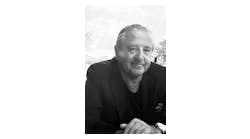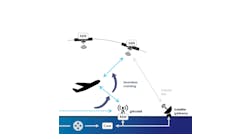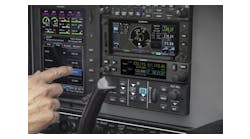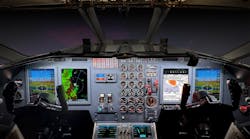Aug. 26--Every pound counts these days for car and airplane makers, and researchers at PPG Industries Inc. are working to help them achieve weight-savings goals.
Aircraft windshields made of PPG's transparent plastic are 66 pounds lighter per square foot than glass, said Ed Rakiewicz, a 17-year PPG researcher and associate director of aerospace research. PPG's lightweight sealants can reduce an airplane's weight by 1,400 pounds, and using the company's electrocoated parts instead of paint can reduce a wide-body aircraft's weight by 650 pounds, he said.
Cutting energy use is the top driver of research and development efforts at PPG, Charles F. Kahle, chief technology officer at the world's largest paint company, said on Monday during a tour of the company's Coatings Innovation Center in Allison Park -- one of the Downtown-based company's five research locations in the region.
"Cars, beer cans, airplanes -- PPG products are in all of these things," Kahle said, and it wants to leverage R&D into even more products.
PPG's target is to spend 3 percent of sales on research each year and generate 30 percent of sales from new products, he said. R&D spending increased from $403 million in 2009 to $505 million in 2013, leading to an average of 80 patents granted each year. PPG had annual sales in 2013 of $15 billion, up 12 percent.
The company employs 650 scientists in the United States, including 300 in the Pittsburgh region, which Kahle said is a great place to have an R&D presence. It has strong universities and a network of companies that focus on technology, such as Alcoa, Bayer, Kennametal and others, he said. Last year, PPG hired 160 workers for R&D, with nearly three-fourths coming from Pitt, Carnegie Mellon, Penn State and other schools in the state. And 57 of the 160 had advanced degrees.
PPG has about 2,200 employees in the Pittsburgh area and about 42,000 worldwide.
This year, PPG is celebrating 50 years since it introduced electrocoating technology, which has helped reduce corrosion on automotive products. Today, it wants to extend that technology and others with new materials to make surface protection permanent and to cut weight in cars and airplanes, Kahle said.
"Electric deposition of paint came out of this facility and put PPG on a course to become the leader in paint it is today," he said. "Energy is one of the biggest drivers of what we do today."
Electrocoating is a method of painting parts by immersing them in a bath of water-thinned paint that uses electrical current on surfaces. The system applies a current to a metal part immersed in oppositely charged paint, using the principle of opposites attract. The paint is drawn to the metal, forming an even film over the surface.
Thor Lingenfelter, an 18-year PPG electrocoating scientist, demonstrated the process in the lab by dipping a steel plate attached to a positive current into a beaker with opposite charged paint. "It's a very labor un-intensive process," he said. Yet the coating gets into the tiny recesses of complex parts such as an auto radiator better than traditional protective coatings such as paint.
Lingenfelter said the focus is to enhance durability and scratch resistance of auto and aerospace coatings.
Electrocoating has advanced steadily over the years, he said, such as development of a one-coat process for appliance maker Whirlpool in the 1980s and a lead-free process in the 1990s. Each day, about 20,000 washers and dryers are made using electrocoating, Lingenfelter said.
PPG continues to improve the process because more stringent energy rules require lighter-weight materials, such as aluminum. Manufacturers want to cut temperatures in ovens used to cure electrocoated parts.
Ten million cars a year are coated with electrocoating, said Craig Wilson, a 30-year PPG scientist.
John D. Oravecz is a staff writer for Trib Total Media. He can be reached at 412-320-7882 or [email protected].
Copyright 2014 - The Pittsburgh Tribune-Review



